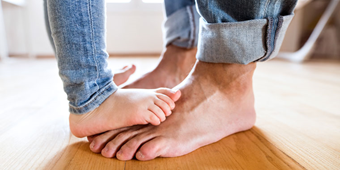Protecting Yourself Against Shingles Saves You From Virus Pain

Find Your Perfect Match
Answer a few questions and we'll provide you with a list of primary care providers that best fit your needs.
If you’ve ever had the chickenpox, you’re already at risk for someday developing shingles.
Shingles is a painful rash that usually develops on one side of your body or one side of your face, says Mansi Amin, DO.
The rash shows up in a patch and looks like blisters that scab over within seven to 10 days.
“It is caused by the Varicella-zoster virus, which also causes chickenpox,” Dr. Amin says. “What happens is chickenpox is the primary infection, and then the virus remains dormant in the spine, in the ganglia. After many years it can become active again, and it causes shingles.”
Signs And Symptoms
Before you notice the rash from shingles, you’ll probably feel pain, tingling, and itching because the shingles virus starts by traveling in your nerves. Dr. Amin describes it as a very specific type of burning pain.
The blistery rash then appears in about two to five days.
“It starts out as tiny, little papules, and red skin,” she says. “It can be accompanied by headaches, fever, chills, even upset stomach.”
Unfortunately, shingles is potentially contagious, especially to anyone who hasn’t been exposed to the virus before.
So, if you have shingles, it’s important to:
- Avoid anyone whose immune system is compromised, such as people with HIV, pregnant women, premature babies, people taking chemotherapy, and people with cancer.
- Avoid letting anyone come in contact with blister secretions.
- Avoid people who haven’t had the shingles vaccine.
- Cover blisters.
It’s likely your shingles outbreak was triggered by a decrease in your immunity. You could have a weakened immune system, for example, from stress, religious fasting, or taking steroids.
Treatment
If you think you have shingles, it’s important to visit your primary care provider as soon as possible. If you go early enough, your provider can give you an antiviral medication to take.
Though it’s possible to get shingles more than once, it’s rare to get it again.
Dr. Amin recommends getting vaccinated to avoid shingles altogether. The Shingrix® vaccine is recommended for adults starting at age 50. Shingrix is given in two doses, two to six months apart.
“Even if you’ve had chickenpox or shingles before, you should still get the vaccine,” Dr. Amin says.
Find Your Perfect Match
Answer a few questions and we'll provide you with a list of primary care providers that best fit your needs.
Source: Mansi Amin, DO, SureCare Medical Center




